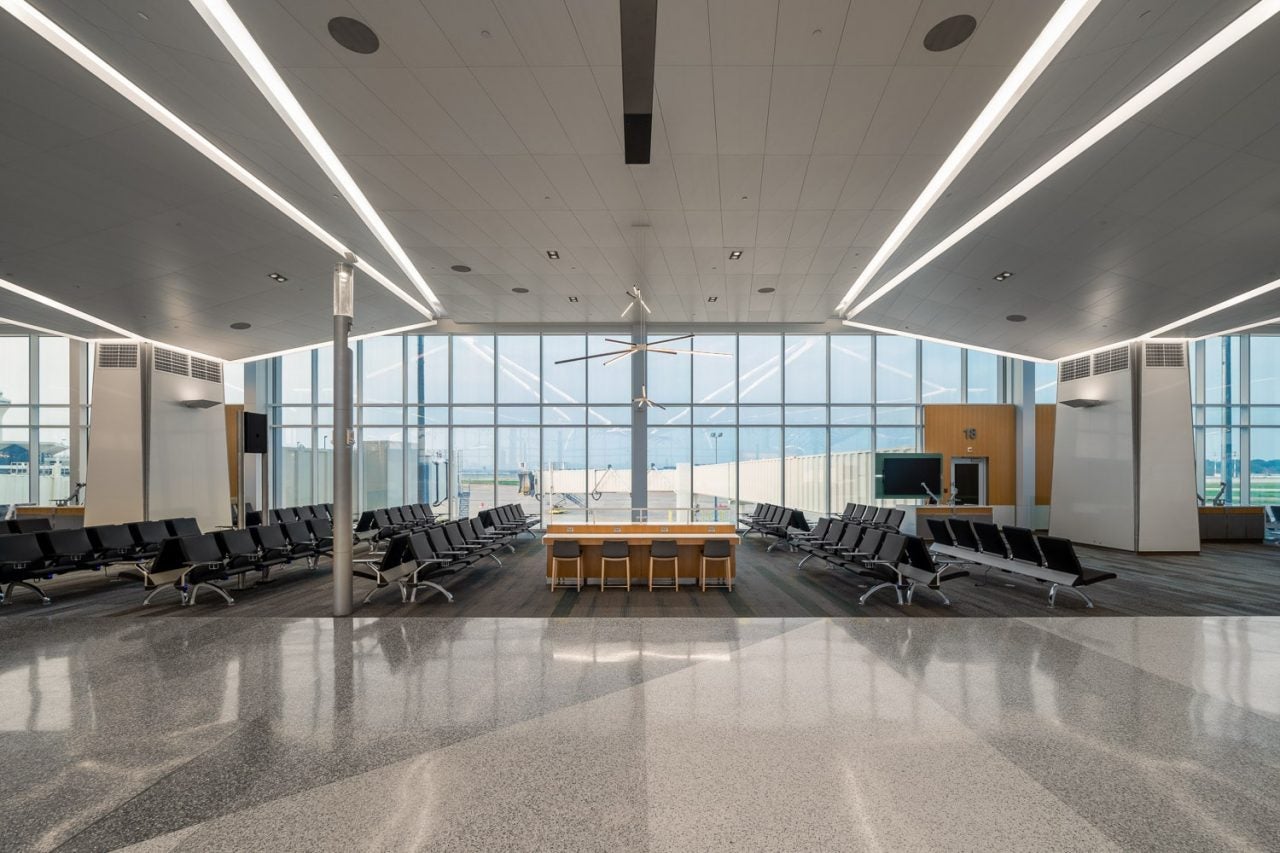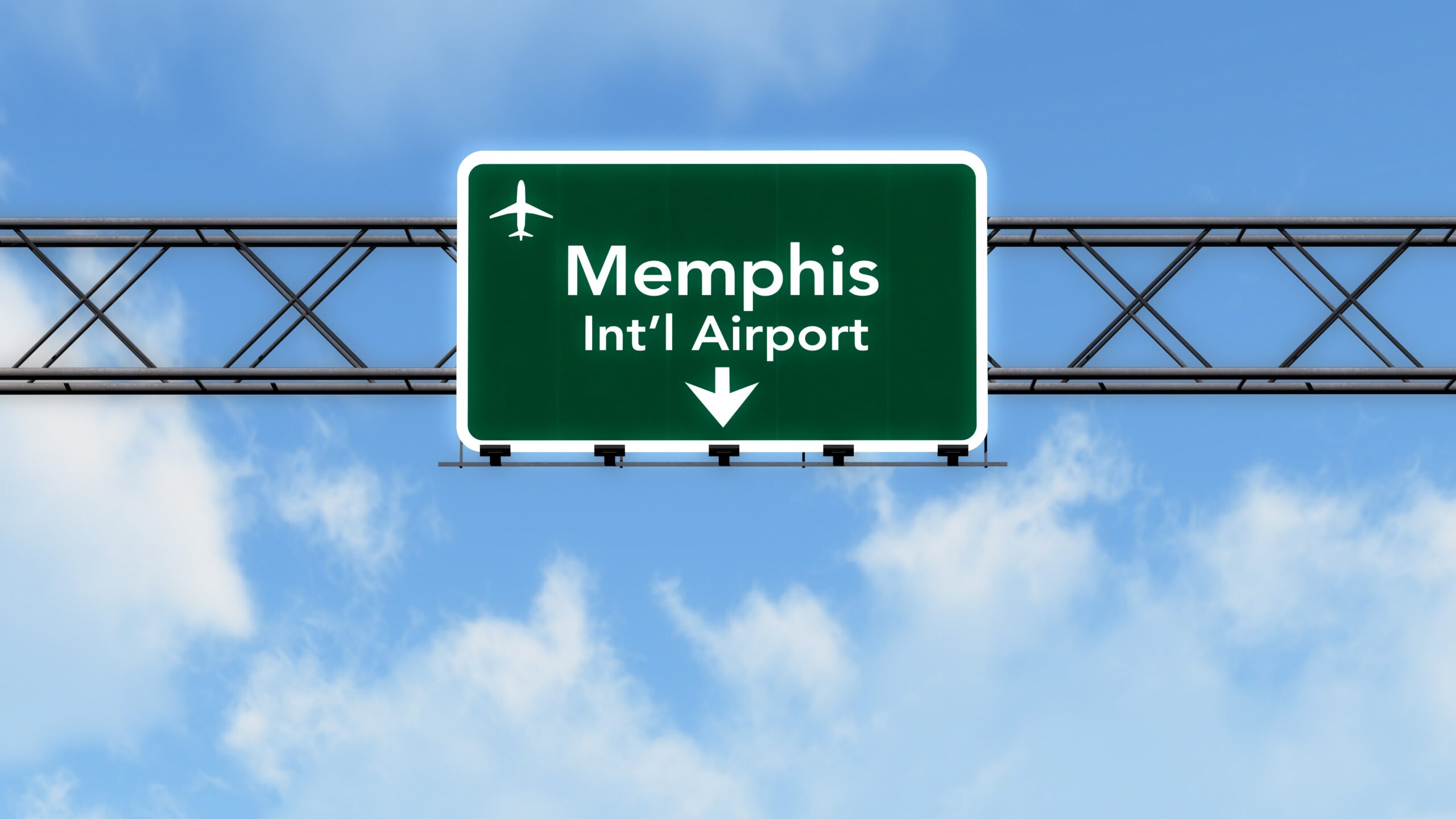
Located in Tennessee, US, Memphis International Airport is the primary international airport serving Memphis, Tennessee. Covering 3,900 acres which include eight runways the airport is one of the busiest in the country. As part of the airport’s multiphase capital improvement plan the airport is aiming to modernise and consolidate airline and retail operations along with higher ceilings, larger gate areas and much more.
As part of this plan smart windows, created by View Inc – a glass manufacturing company who produce smart glass – have been installed which utilise artificial intelligence to optimise the amount of natural light which enters the terminal, controls heat, glare and aims to improve the overall passenger experience.
We speak to Kristi Crase strategy director, aviation, View Inc to find out how this technology works as well as how the inclusion of the glass has benefitted other airport locations.

Frankie Youd (FY): Could you provide an outline on the smart windows and the technology that they have?
Kristi Crase (KC): Typically, the intent of these windows is to open up the views, bring in the maximum amount of natural light, and protect the ability for passengers to see out of the windows at all times. Additionally, they reduce glare and heat, so we’re providing the airport with a very sustainable solution. The product itself reduces the heat, reduces the glare impacts on technologies within the airport.
How well do you really know your competitors?
Access the most comprehensive Company Profiles on the market, powered by GlobalData. Save hours of research. Gain competitive edge.

Thank you!
Your download email will arrive shortly
Not ready to buy yet? Download a free sample
We are confident about the unique quality of our Company Profiles. However, we want you to make the most beneficial decision for your business, so we offer a free sample that you can download by submitting the below form
By GlobalDataSmart glass is also called electrochromic glass or dynamic glass. It is a nano technology metal oxide coating that goes on the inside layer of a double pane window. It’s traditional glass with this coating, which when you run electricity through it, causes the windows to tint.
How we approach it is we have a predictive algorithm, it’s a software driven system that looks at the orientation of the sun, the orientation of the building, the building occupancy use – what’s happening inside the building – how are things laid out, and the current weather conditions. We marry all those concepts together and provide a predictive algorithm that allows the windows to tint in front of a glare event.
We do this in a way that’s customizable to the building and customizable to how they want to utilise it. It’s something that can be changed if they have a situation where they need to take the windows down or lighten up the windows for any reason, they can do that at any time. It’s also set on an operational system so that they don’t have to think about it from an operational perspective either.
How did the work with Memphis International Airport come about?
Memphis was very smart at how they were approaching this project, they had a number of guiding principles that they were looking to achieve – primarily connecting, transforming and inspiring. They recognised early on that the relationship of passenger experience is going to be important to the success of the project. They were seeking different technologies that could inform a better passenger experience.
What I think has been a real benefit for them is since the pandemic hit, there’s been a change in aviation travel. There used to be a heavy mix of both leisure and business travel, now some of the business travel has dropped off or levelled out, and we’ve seen a lot more leisure travel, especially this year. That increase in leisure travel is seeing airports focus more heavily on passenger experience, so this is a huge benefit for Memphis because they were able to think about this in advance.

How do the windows optimise the amount of natural light that is let in?
When we say optimising the amount of natural light, we use the algorithm that says we’re going to leave these windows un-tinted and as clear as possible so they’re bringing in the maximum amount of natural light.
You only tint when there’s the potential for glare to come in to cause discomfort, to cause glare to be there or the heat to rise. It’s kind of that tap dance of only tinting when you need it but bringing it up so that it’s as bright in natural light as possible.
We’re trying to connect people to the outdoors, people like to be connected to light. There’s been a lot of studies done around what natural light does to productivity and health benefits, headaches, eyestrain, things like that – so you don’t want too much of it. That’s the idea of optimising the space so that you have a light, bright, airy space but without the impacts of the glare.
Does the glass offer any sustainability benefits?
There’s definitely a sustainability side to this, they do provide an annual reduction in airport’s energy costs – they are very efficient. They provide some operational efficiencies for airports in that regard from a sustainability perspective. They also help airports meet some of their sustainability goals, they can utilise our glass as a part of that overall ecosystem to work towards achieving those goals.
We also have a family of environmental sensors that work off the same control system that our glass does. The sensors monitor light & views, air quality, sound levels and thermal health providing actionable data the airport can use to improve building performance and enhance the quality and comfort of the space.
How does the glass impact the passenger’s retail experience?
We have done studies on that, one specifically looking at passenger comfort at Dallas Fort Worth International Airport. In 2017, the airport decided that they wanted to study specifically the impacts of smart glass on passenger comfort and revenue. They installed glass in one of their gate areas, they used a gate area right next to it as their control gate, and they also outfitted a small bar and grill that had east facing facades – at the time it was an underperforming restaurant. There were no other additional changes, they wanted to see the impact of putting in the smart glass.
On the restaurant side – which was the revenue study – they saw a 102% increase in their revenue just by installing the glass. That has maintained so it wasn’t a blip on the radar, it’s a statistic that has stayed with them. They got a 15-degree reduction in temperature in both the restaurant and the gate area, they also got an 83% increase in dwell time. They had the ability to maximise their seating space in both the restaurant and the gate area because they can have seating right up against the glass, without any discomfort or glare.
Another study that we did was at Charlotte Douglas International Airport. They wanted to specifically look at passenger experience and the impact of smart glass on their five-star ratings. They looked at gate areas that had our smart glass and control gates that did not. They also got a 15-degree reduction in temperature in the gate areas, and they found that the relationship between daylight comfort in the gate area with the views impacted the five-star rating. They got a 68% more likely to provide a five-star rating when they were in the new glass area.
That also translated for them into a revenue component. When they looked at a study that Airports Council International did on the impact of increasing passenger experience to what the impact is on revenue, they found that for every 1% increase in passenger experience, you can anticipate a 1.5% increase in their spend in non-aeronautical spend. For Charlotte Douglas, they increased their passenger ratings by 9%, which equated to a 13% increase in their overall revenue.
We also found a lot of people are asking for the glass in retail spaces. We’ve had several concessions come to us and say their chocolates are melting, or alcohol bottle labels are fading, and it’s impacting their stock. We’ve done some implementations, specifically in airport concession areas, just to protect their space.
What benefits can the glass bring to building design?
The main components of the glass are really beneficial, they allow you to future proof your building. This is a forward thinking, if you build a building it’s going to be there for 30 to 50 years, you’re going to put in glass, it’s something that you’re going to have to live with. This type of technology allows you to future proof you’re building, you’re wiring the skin of your building, you’re electrifying the skin of your building to add additional applications.
Our controls, our system that powers the glass, allows for the addition of Internet of Things and third-party devices. It provides additional value to grow and expand as you need to from a building perspective.
You’re modernising, future proofing, and providing a value to all the occupants inside of the space now and in the future. You’re reducing the impact on the environment by reducing costs, reducing the energy needed to operate a building by having a device like this.




